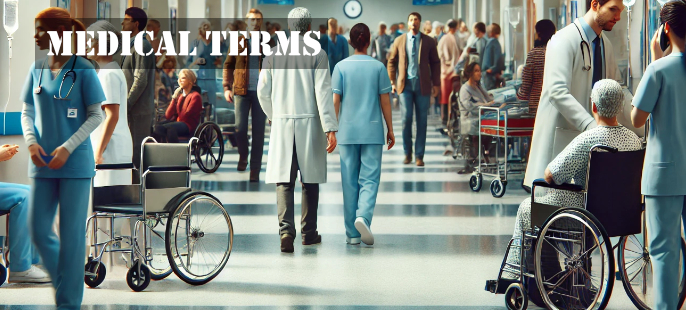Understanding Balance Disorders: A Comprehensive Overview
Balance is a complex physiological function that allows us to maintain our orientation and posture. It is a vital aspect of our daily activities, enabling us to walk, run, and perform myriad tasks without falling. However, when this balance is disrupted, it can lead to a condition known as a balance disorder. This article delves into the intricacies of balance disorders, focusing on their causes, symptoms, diagnosis, and treatment options available in the realm of medicine.
The Physiology of Balance
Our sense of balance is primarily governed by the vestibular system, located in the inner ear. This system works in conjunction with the visual system and proprioceptive feedback from muscles and joints. The vestibular system includes the semicircular canals and otolithic organs, which detect rotational and linear movements, respectively. Signals from these sensory organs are sent to the brain, which processes the information to maintain equilibrium.
Causes of Balance Disorders
Balance disorders can arise from various factors, ranging from inner ear problems to neurological conditions. Some common causes include:
- Benign Paroxysmal Positional Vertigo (BPPV): A condition where tiny calcium particles clump up in the inner ear canals, causing dizziness and balance issues.
- Meniere’s Disease: A disorder characterized by excessive fluid in the inner ear, leading to vertigo, tinnitus, and hearing loss.
- Vestibular Neuritis: An inflammation of the vestibular nerve, often due to viral infections, resulting in sudden vertigo and balance disturbances.
- Labyrinthitis: Inflammation of the inner ear structures, affecting both hearing and balance.
- Neurological Disorders: Conditions like Parkinson’s disease, multiple sclerosis, and stroke can affect balance by disrupting the brain’s processing of balance signals.
- Medications: Some medications, especially those that affect the central nervous system, can cause dizziness and balance problems as side effects.
Symptoms of Balance Disorders
Individuals with balance disorders often experience a range of symptoms that can significantly impact their quality of life. These symptoms may include:
- Dizziness: A sensation of lightheadedness or feeling faint.
- Vertigo: A spinning or whirling sensation, often triggered by head movements.
- Imbalance: Difficulty in maintaining a stable posture, leading to frequent falls or stumbling.
- Nausea and Vomiting: Often accompany vertigo and dizziness.
- Blurred Vision: Difficulty focusing on objects, especially when moving.
- Disorientation: A feeling of confusion or being out of sync with the environment.
Diagnosing Balance Disorders
Diagnosing balance disorders involves a comprehensive evaluation by a healthcare professional, often an otolaryngologist or a neurologist. The diagnostic process may include:
- Medical History: A detailed account of symptoms, onset, duration, and any potential triggers.
- Physical Examination: Assessment of balance, gait, and coordination.
- Hearing Tests: Audiometry and other tests to evaluate hearing function, as ear problems often accompany balance disorders.
- Vestibular Testing: Tests such as electronystagmography (ENG) or videonystagmography (VNG) to evaluate the vestibular system’s function.
- Imaging Studies: MRI or CT scans to identify structural abnormalities in the brain or inner ear.
- Blood Tests: To rule out infections or metabolic disorders.
Treatment Options for Balance Disorders
The treatment for balance disorders depends on the underlying cause. Some common approaches include:
- Medications: Antihistamines, anticholinergics, or benzodiazepines may be prescribed to alleviate dizziness and nausea. Diuretics or corticosteroids can be used for conditions like Meniere’s disease.
- Vestibular Rehabilitation Therapy (VRT): A specialized form of physical therapy aimed at improving balance and reducing dizziness through exercises that encourage the brain to compensate for the vestibular dysfunction.
- Cognitive Behavioral Therapy (CBT): Helpful in managing the anxiety and stress that often accompany chronic balance disorders.
- Surgery: In severe cases, surgical intervention may be necessary to correct structural problems in the inner ear.
- Lifestyle Modifications: Patients are often advised to make changes such as reducing caffeine and salt intake, quitting smoking, and avoiding triggers like sudden head movements.
Living with a Balance Disorder
Living with a balance disorder can be challenging, but with proper management, individuals can lead fulfilling lives. Support from healthcare providers, family, and support groups can provide the necessary guidance and encouragement. It’s crucial for patients to adhere to treatment plans, attend regular follow-ups, and be vigilant about safety to prevent falls and injuries.
Conclusion
Balance disorders encompass a wide range of conditions that can significantly affect an individual’s daily functioning and quality of life. Early diagnosis and a tailored treatment plan are essential in managing these disorders effectively. As research continues to advance our understanding of balance and its disorders, new therapies and interventions promise to improve outcomes for those affected. If you or someone you know is experiencing symptoms of a balance disorder, seeking medical advice promptly is the first step towards regaining stability and confidence.

